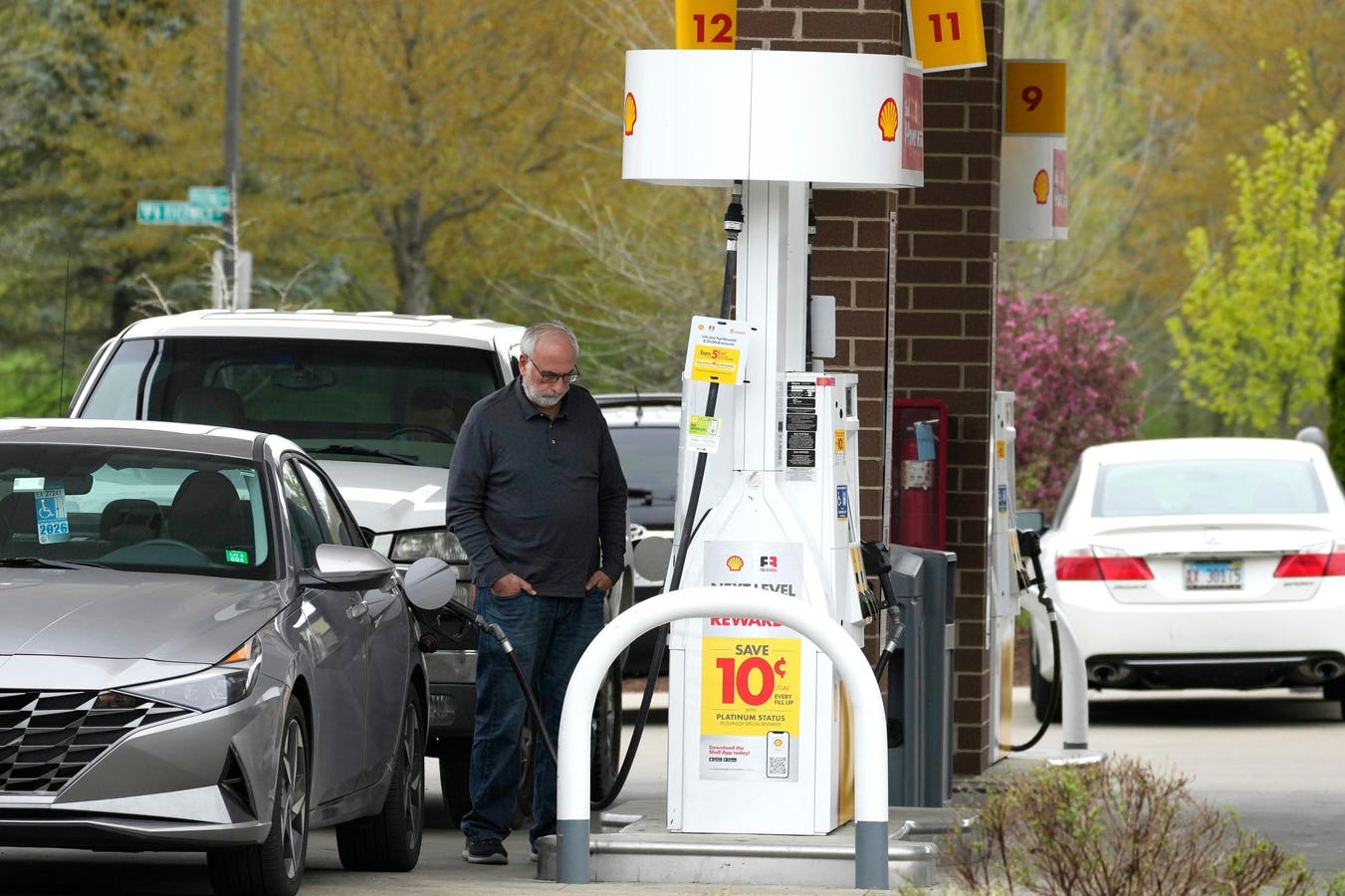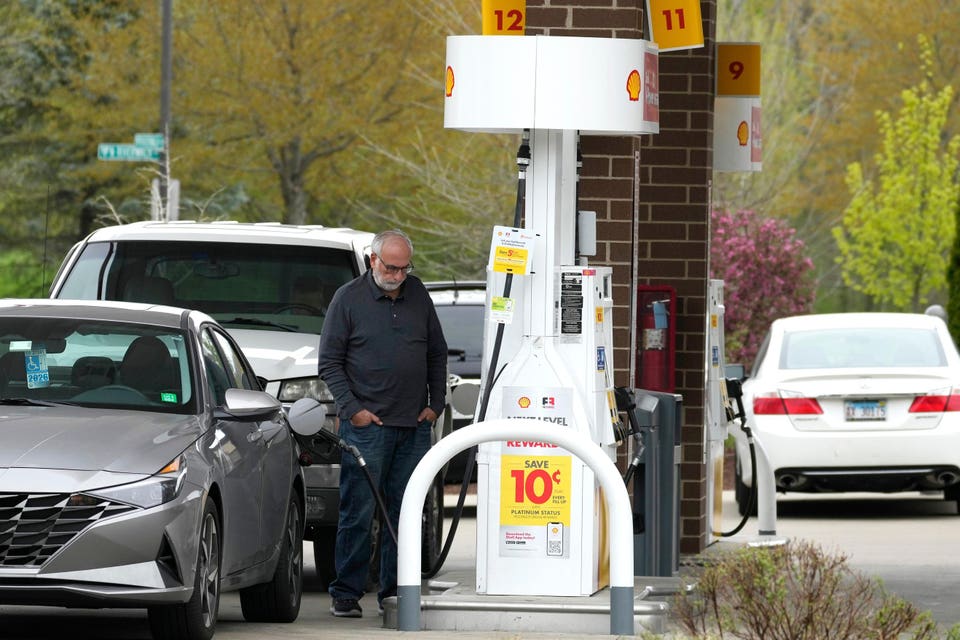FILE – A customer fills up his vehicle’s gas tank at a gas station in Buffalo Grove, Ill., April 23, 2024. (AP Photo/Nam Y. Huh, file)
Copyright 2024 The Associated Press. All rights reserved.
Friday came the data from the University of Michigan’s Surveys of Consumers. November 2025 data. The overall index of consumer sentiment fell from 53.6 in October to 51.0. November 2024 it was 71.8, a year-over-year change of -29.0%.
Consumers’ takes on current economic conditions fell from 58.6 in October to 51.1. That was down 20.0% from 63.9 in November 2024.
As for the index of consumer expectations, that was up slightly from 50.3 in October to 51.0 in November. However, it was also the largest year-over-year drop of the three, down from 76.9 in November 2024.
The month-to-month changes don’t mean much. As Surveys of Consumers Director Joanne Hsu noted in prepared remarks, those changes were within the study’s margin of error. The MOE is the interval around the calculated answer, but any value within the interval could potentially be the correct one.
This is a frequent problem in studies. Those looking at the data may assume any change to be significant. But if the new value is within that MOE, it may be that nothing really happened.
The year-over-year difference, though, is big. There’s a big emotional defeat in the eyes of those surveyed.
“By the end of the month, sentiment for consumers with the largest stock holdings lost the gains seen at the preliminary reading,” Hsu said. “This group’s sentiment dropped about 2 index points from October, likely a consequence of the stock market declines seen over the past two weeks.”
Year-ahead inflation expectations are important. Economists often say expectations set attitudes, and attitudes direct action. If consumers expect prices to rise, companies might assume they could or should raise prices. Or consumers might pull back their spending out of concern, making companies reconsider their revenues and expenses, cutting staffing, driving up unemployment and undercutting the entire economy, possibly sending it into a tailspin.
At the moment, there have been three months of falling year-ahead inflation expectations. That is good, but it is a low level of positive news. More important is one observation: “Despite these improvements in the future trajectory of inflation, consumers continue to report that their personal finances now are weighed down by the present state of high prices,” Hsu said.
Young people largely can’t afford to buy houses and enter a more secure middle class, even if they do give up coffee from Starbucks and avocado toast (which I finally tried and will admit it is tasty).
New college graduates with a bachelor’s degree currently face an unemployment rate more than double the overall rate. People with common STEM (science, technology, engineering, and mathematics) are among those with higher-than-average unemployment rates. Computer engineering and science, for example.
The percentage of unemployed people who have been out of work for at least half a year has been steadily growing. But for the first time since at least 1948, this has started to happen outside of the end of a recession.
There seem to be fundamental changes in the economic balances and trends the country has come to expect. Consumers seem to understand this at some level policymakers, economists, and other experts either don’t, or don’t admit to.

